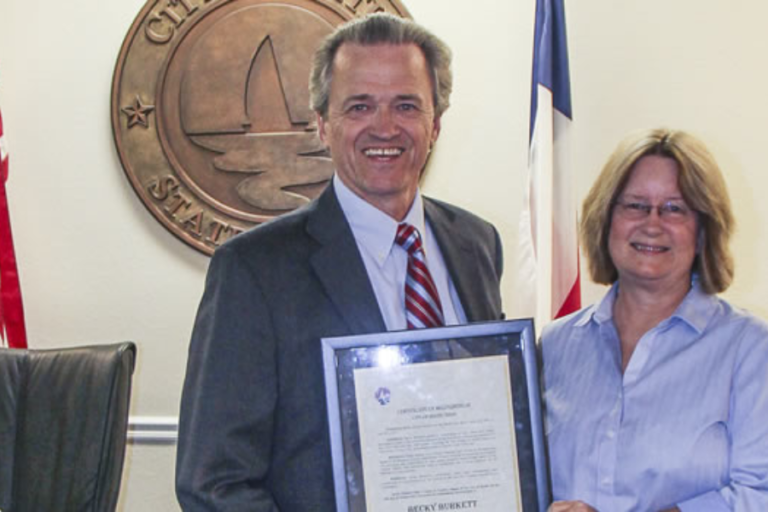Obsessive Fandomism: Unraveling the Phenomenon and Its Far-Reaching Impact
In today’s hyper-connected digital era, fandom has evolved into a powerful cultural force, deeply embedded within social media and online communities. While fandom has always played a significant role in the entertainment industry, the emergence of obsessive fandomism has propelled fan engagement to unprecedented heights. This extreme form of fandom is marked by a relentless dedication to a specific subject—be it a celebrity, television show, movie, book series, or any other element of popular culture. Obsessive fandomism is a double-edged sword; it unites people through shared passions but also exerts profound effects on individuals, communities, and industries.
This article delves into the intricacies of obsessive fandomism, exploring its defining characteristics, underlying causes, and widespread impacts. We will also examine how this phenomenon has reshaped the entertainment landscape and influenced cultural trends globally.
What is Obsessive Fandomism?
Obsessive fandomism represents an extreme form of fan behavior characterized by intense emotional attachment and unwavering dedication to a particular subject or interest. Unlike casual fans who simply enjoy and appreciate a subject, obsessive fans transcend mere admiration. They invest considerable time, energy, and resources into their fandom, often integrating it as a central part of their identity.
Characteristics of Obsessive Fandomism
Intense Passion: Obsessive fans exhibit an extraordinary level of passion for their chosen subject. This passion often manifests in the form of extensive knowledge, frequent discussions, and a deep emotional connection to the subject.
Devotion of Time and Resources: These fans are willing to commit substantial time and resources to their fandom. This may involve attending events, purchasing merchandise, creating fan content, and participating in online communities dedicated to their interest.
Community Engagement: Active participation in fan communities is a hallmark of obsessive fandomism. These communities provide a space for fans to connect, share experiences, and collaborate on fan projects.
Emotional Attachment: Obsessive fans often develop strong emotional bonds with their subject, leading to a wide range of emotions—joy, excitement, and sometimes distress—depending on developments related to the subject.
Identification with the Subject: For many obsessive fans, their fandom becomes a core part of their identity. They often identify themselves by their fandom and incorporate it into their daily lives, influencing everything from their social interactions to their personal choices.
Types of Obsessive Fandomism
Obsessive fandomism can manifest in various forms, each reflecting the diversity of popular culture:
Celebrity Obsession: Fans who form intense emotional connections with celebrities, often following their personal lives closely, attending events, and engaging in fan clubs.
Media Franchise Obsession: Fans deeply invested in specific media franchises—such as TV shows, movies, or book series—often consume all related content and merchandise associated with their favorite franchise.
Sports Obsession: Sports fans who passionately support their favorite teams or athletes, attending games, following statistics, and engaging in fan discussions, often show signs of obsessive fandomism.
Music Obsession: Fans who display unwavering devotion to musicians or bands, regularly attending concerts, purchasing albums, and participating in fan communities, exemplify obsessive fandomism in the music industry.
The Causes of Obsessive Fandomism
Psychological Factors
Several psychological factors contribute to the development of obsessive fandomism:
Escapism: Fandom provides an escape from the stresses and challenges of everyday life, offering a sense of belonging, comfort, and a break from reality.
Identity Formation: For some individuals, fandom becomes a means of forming and expressing their identity. It allows them to connect with like-minded people who share similar interests and values.
Social Connection: Fandom offers a sense of community and social connection, fostering relationships with others who share the same passions.
Emotional Fulfillment: Obsessive fandomism can provide emotional satisfaction, eliciting strong feelings of joy, excitement, and contentment.
Societal and Cultural Influences
Societal and cultural factors also play a significant role in shaping obsessive fandomism:
Media Influence: The media plays a critical role in shaping fandom, with celebrities, TV shows, and movies receiving extensive coverage and promotion, often fueling fan enthusiasm.
Social Media: Social media platforms have revolutionized fandom by providing fans with direct access to celebrities and fan communities, thereby intensifying fan engagement.
Cultural Trends: Cultural trends and societal values influence fandom, with certain subjects gaining popularity and becoming celebrated within the mainstream culture.
The Impact of Obsessive Fandomism
Positive Impacts
Obsessive fandomism can have several positive effects on individuals and communities:
Community Building: Fandom creates a sense of community and belonging, bringing people together to share experiences and celebrate shared interests.
Creative Expression: Fandom provides a platform for creative expression, with fans often producing fan art, fan fiction, and other forms of fan content that contribute to the richness of the fandom experience.
Support Networks: Fandom communities often serve as support networks, offering emotional support and camaraderie to individuals facing personal challenges or seeking connection.
Cultural Influence: Fandom can significantly influence cultural trends and contribute to the success of media franchises, shaping the entertainment landscape and consumer behavior.
Negative Impacts
While obsessive fandomism can yield positive outcomes, it can also have negative consequences:
Unhealthy Obsession: In extreme cases, fandom can become an unhealthy obsession, leading to the neglect of responsibilities, relationships, and personal well-being.
Online Toxicity: Fandom communities can sometimes become toxic, with conflicts and negative behaviors arising from differing opinions and intense emotions.
Financial Strain: The pursuit of fandom-related activities and merchandise can lead to financial strain, with fans spending significant amounts of money on their interests.
Emotional Distress: Obsessive fandomism can lead to emotional distress when a subject’s developments don’t align with fan expectations or when conflicts arise within fan communities.
Obsessive Fandomism in the Entertainment Industry
The Role of Fandom in Media Success
Fandom plays a crucial role in the success of media franchises and entertainment properties:
Box Office Success: Fan support can drive box office success, with passionate fans eagerly attending movie premieres and screenings, often contributing to record-breaking revenues.
Merchandise Sales: Fans frequently purchase merchandise related to their favorite franchises, generating significant revenue for entertainment companies and sustaining the industry’s growth.
Social Media Promotion: Fans play a vital role in promoting media properties on social media, generating buzz, excitement, and anticipation for upcoming releases.
The Influence of Obsessive Fandomism on Content Creation
Obsessive fandomism can influence content creation and decision-making within the entertainment industry:
Fan Feedback: Creators often consider fan feedback and preferences when developing new content, recognizing the importance of maintaining fan engagement and loyalty.
Expanded Universes: In response to fan demand, entertainment companies may expand universes with spin-offs, sequels, and additional content, often leading to the creation of new storylines and characters.
Crossover Events: Crossover events and collaborations between franchises are frequently driven by fan interest, resulting in unique and engaging experiences that attract diverse audiences.
Obsessive Fandomism in Pop Culture
Fandoms and Social Movements
Fandoms have increasingly intersected with social movements, using their platforms to advocate for change:
Activism and Advocacy: Fans often leverage their collective voices to advocate for social issues, raising awareness and supporting charitable causes that align with their values.
Diversity and Inclusion: Fandoms promote diversity and inclusion, advocating for representation and equity within the entertainment industry and challenging norms that exclude marginalized groups.
The Power of Fan Campaigns
Fan campaigns have demonstrated their power in influencing decisions within the entertainment industry:
Revival Campaigns: Fan campaigns have successfully revived canceled TV shows and movies, showcasing the impact of fan dedication and collective action on industry decisions.
Award Recognition: Fans have rallied to secure award recognition for their favorite actors and projects, demonstrating the influence of collective support on prestigious accolades.
The Evolution of Fandom: A Historical Perspective
Early Fandom: The Origins
Fandom has a rich history that predates the digital age, with early fandoms forming around literature, sports, and theater:
Literary Societies: Early fandoms often centered around literary works, with fans forming societies to discuss and celebrate their favorite authors and books, fostering intellectual engagement.
Sports Fandom: Sports fandom emerged as a prominent form of fan engagement, with fans passionately supporting their favorite teams and athletes, often becoming deeply intertwined with regional and cultural identities.
Theatrical Enthusiasts: Theater enthusiasts formed fandoms around popular plays and performers, attending performances and engaging in lively discussions, contributing to the cultural vibrancy of the time.
The Rise of Modern Fandom
The rise of technology and the internet has transformed fandom into a global phenomenon:
Online Communities: The internet has facilitated the creation of online fan communities, allowing fans to connect with others worldwide, share their passions, and engage in collaborative projects.
Social Media Engagement: Social media platforms have revolutionized fan engagement, enabling direct interactions with celebrities, creators, and other fans, thereby fostering a sense of immediacy and connection.
Fan Conventions: Fan conventions have become popular events where fans gather to celebrate their interests, meet creators, and participate in activities that deepen their engagement with their fandom.
The Psychology of Obsessive Fandomism
Emotional Connection and Attachment
Obsessive fandomism is often driven by strong emotional connections and attachments to the subject:
Parasocial Relationships: Fans may form parasocial relationships with celebrities, developing a sense of intimacy and familiarity despite the one-sided nature of the relationship.
Emotional Resonance: Fandom subjects often resonate emotionally with fans, eliciting feelings of joy, excitement, empathy, and even catharsis, which strengthen their attachment to the subject.
Identity and Belonging
Fandom provides a sense of identity and belonging, allowing fans to connect with others who share their passions:
Self-Expression: Fandom offers a platform for self-expression, enabling fans to showcase their interests, values, and creativity through fan content, discussions, and participation in fandom activities.
Community Identity: Fandom communities foster a sense of collective identity, where fans find validation, support, and camaraderie among like-minded individuals, often leading to lifelong friendships and connections.
Fandom in the Digital Age
The Role of Technology in Shaping Fandom
Technology has played a pivotal role in shaping modern fandom:
Social Media: Social media platforms have revolutionized fan engagement by providing direct access to celebrities, creators, and fan communities. Platforms like Twitter, Instagram, and TikTok have enabled fans to participate in real-time conversations, share fan art and content, and amplify their voices on a global scale.
Fan Forums: Online fan forums have become hubs of fan activity, where fans can discuss their favorite subjects, share theories, and engage in collaborative projects. These forums often serve as spaces for deep analysis and exploration of fandom-related topics.
Content Creation Tools: Advances in technology have empowered fans to create and share their content, such as fan fiction, fan art, videos, and podcasts. These creative endeavors contribute to the richness of the fandom experience and allow fans to actively shape the narrative of their favorite subjects.
Conclusion: The Future of Obsessive Fandomism
Obsessive fandomism is a powerful cultural phenomenon that continues to evolve in response to technological advancements and societal changes. As fandom becomes increasingly intertwined with social media and digital platforms, its impact on popular culture and the entertainment industry will likely grow. While obsessive fandomism can have both positive and negative effects, it undeniably plays a crucial role in shaping the cultural landscape and connecting people through shared passions. As we look to the future, it will be essential to understand and navigate the complexities of obsessive fandomism, recognizing its potential to both unite and divide, inspire creativity, and foster community.







